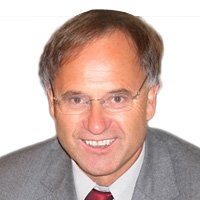Speaker Bio & Abstract

University of Stuttgart
Germany
BiographyStudies of Surveying: Univ. Applied Science Mainz (1971-74 & Univ. Bonn (1974-77); PhD in Signal Processing, Univ. Bonn (1982); Habilitation in GIS, Techn. Univ. Munich (1990). 1992-2016: Full Professor and Director of the Institute for Photogrammetry, Univ. Stuttgart, 2016-now Research Professor and Professor Emeritus
R&D: 1992-2015 Organizer of “The Photogrammetric Week Series”; Research Areas: Photogrammetry, GIS, Computer Vision, Statistical Inference, Signal Processing, Laser Scanning, More than 420 publications, thereof 30 Textbooks/proceedings; Supervisor of 37 PhDs (finished), Co-Supervisor of more than 60 PhDs.AbstractDieter Fritsch, Susanne Becker | University of Stuttgart
The automatic interpretation of point clouds collected by imaging sensors and/or laser scanning is a challenge to be solved by new methods of Deep Learning or Machine Learning. Building Information Modeling (BIM) needs methods converting linear-based, area-based and volumetric point clouds to vectorial floor plans and room structures, especially for existing buildings. For this purpose, formal grammars are applied during object reconstruction to ensure the plausibility and the topological correctness of the reconstructed elements. A famous example for formal grammars is given by Lindenmayer-systems (L-systems). Originally used to model the growth processes of plants, L-systems serve as a basis for the development of further grammars appropriate for the modeling of architecture and BIM features.
In our application, a formal grammar is used for the generation of faade structures and interior elements, where only partially or no sensor data is available. In principle, formal grammars provide a vocabulary and a set of production or replacement rules. The vocabulary comprises symbols of various types. The symbols are called non-terminals if they can be replaced by other symbols, and terminals otherwise. The non-terminal symbol which defines the starting point for all replacements is the axiom. The grammars properties mainly depend on the definition of its production rules. They can be, for example, deterministic or stochastic, parametric and context-sensitive. A common notation for productions which we will refer to in the following sections is given by
id: lc < pred > rc : cond succ : prob.
The production identified by the label id specifies the substitution of the predecessor pred for the successor succ. Since the predecessor considers its left and right context, lc and rc, the rule is context-sensitive. If the condition cond evaluates to true, the replacement is carried out with the probability prob. Based on these definitions and notations we develop a grammar which allows us to synthesize new faades of various extents and shapes, floor plans and room interiors.